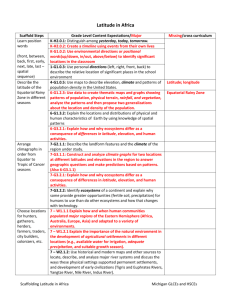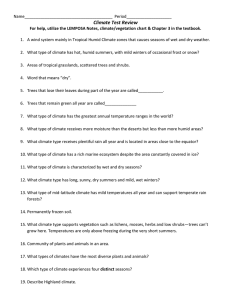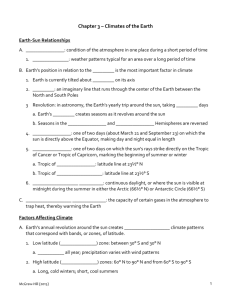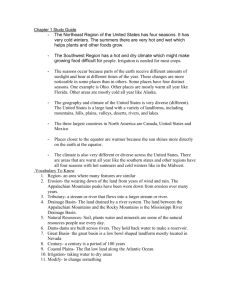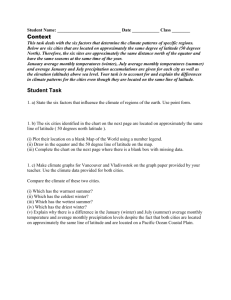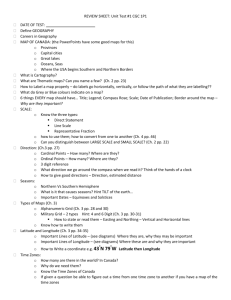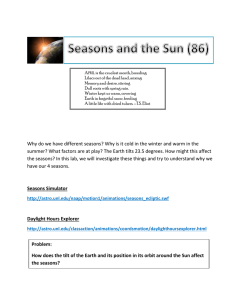Major Climate Zones (Printing tip: Set printer to landscape.)
advertisement
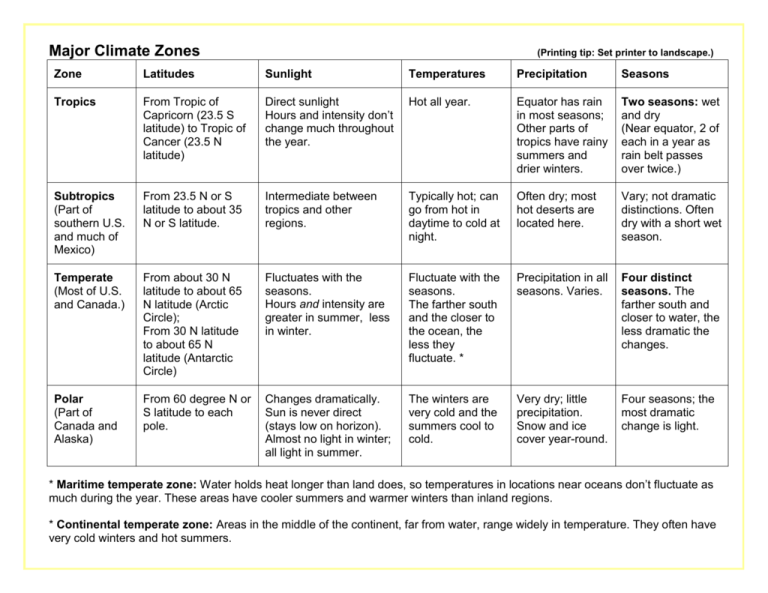
Major Climate Zones (Printing tip: Set printer to landscape.) Zone Latitudes Sunlight Temperatures Precipitation Seasons Tropics From Tropic of Capricorn (23.5 S latitude) to Tropic of Cancer (23.5 N latitude) Direct sunlight Hours and intensity don’t change much throughout the year. Hot all year. Equator has rain in most seasons; Other parts of tropics have rainy summers and drier winters. Two seasons: wet and dry (Near equator, 2 of each in a year as rain belt passes over twice.) Subtropics (Part of southern U.S. and much of Mexico) From 23.5 N or S latitude to about 35 N or S latitude. Intermediate between tropics and other regions. Typically hot; can go from hot in daytime to cold at night. Often dry; most hot deserts are located here. Vary; not dramatic distinctions. Often dry with a short wet season. Temperate (Most of U.S. and Canada.) From about 30 N latitude to about 65 N latitude (Arctic Circle); From 30 N latitude to about 65 N latitude (Antarctic Circle) Fluctuates with the seasons. Hours and intensity are greater in summer, less in winter. Fluctuate with the seasons. The farther south and the closer to the ocean, the less they fluctuate. * Precipitation in all seasons. Varies. Four distinct seasons. The farther south and closer to water, the less dramatic the changes. Polar (Part of Canada and Alaska) From 60 degree N or S latitude to each pole. Changes dramatically. Sun is never direct (stays low on horizon). Almost no light in winter; all light in summer. The winters are very cold and the summers cool to cold. Very dry; little precipitation. Snow and ice cover year-round. Four seasons; the most dramatic change is light. * Maritime temperate zone: Water holds heat longer than land does, so temperatures in locations near oceans don’t fluctuate as much during the year. These areas have cooler summers and warmer winters than inland regions. * Continental temperate zone: Areas in the middle of the continent, far from water, range widely in temperature. They often have very cold winters and hot summers.

